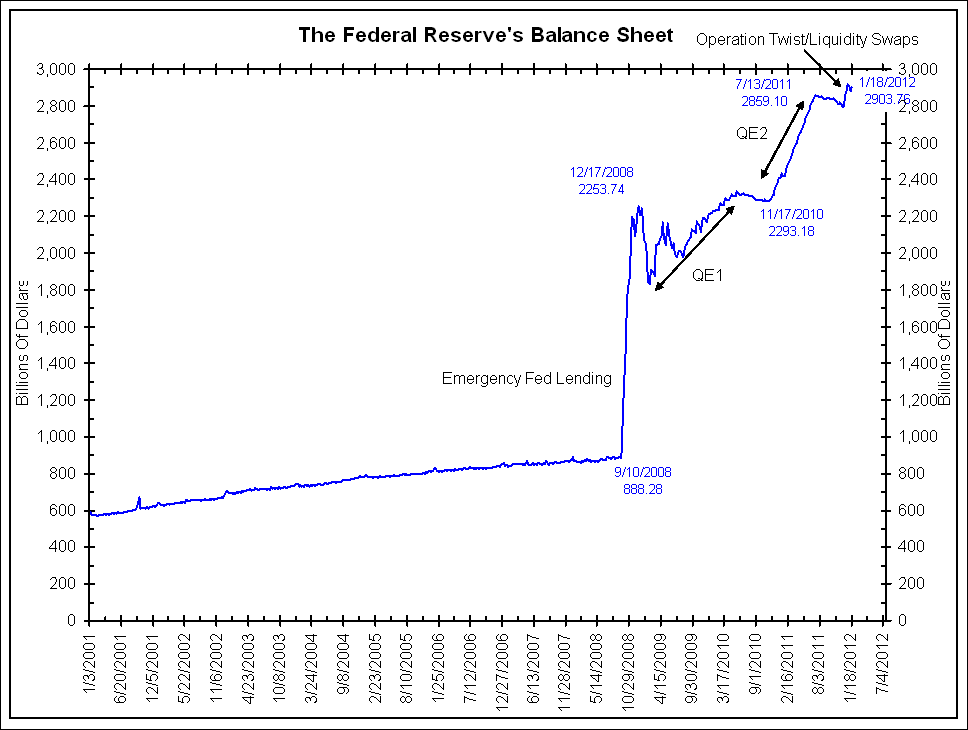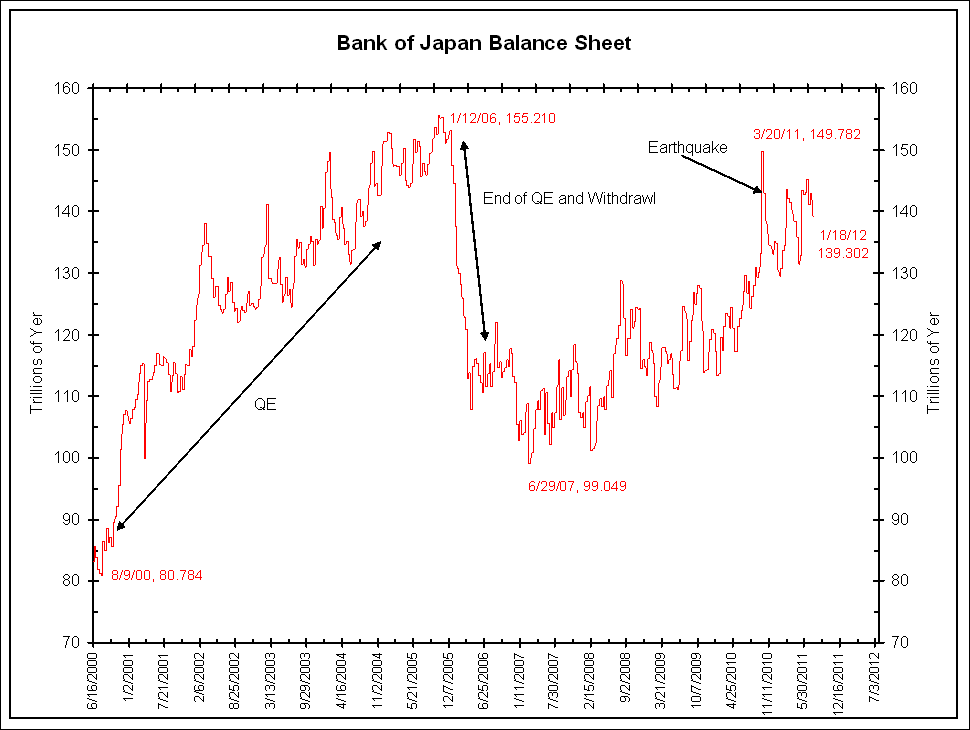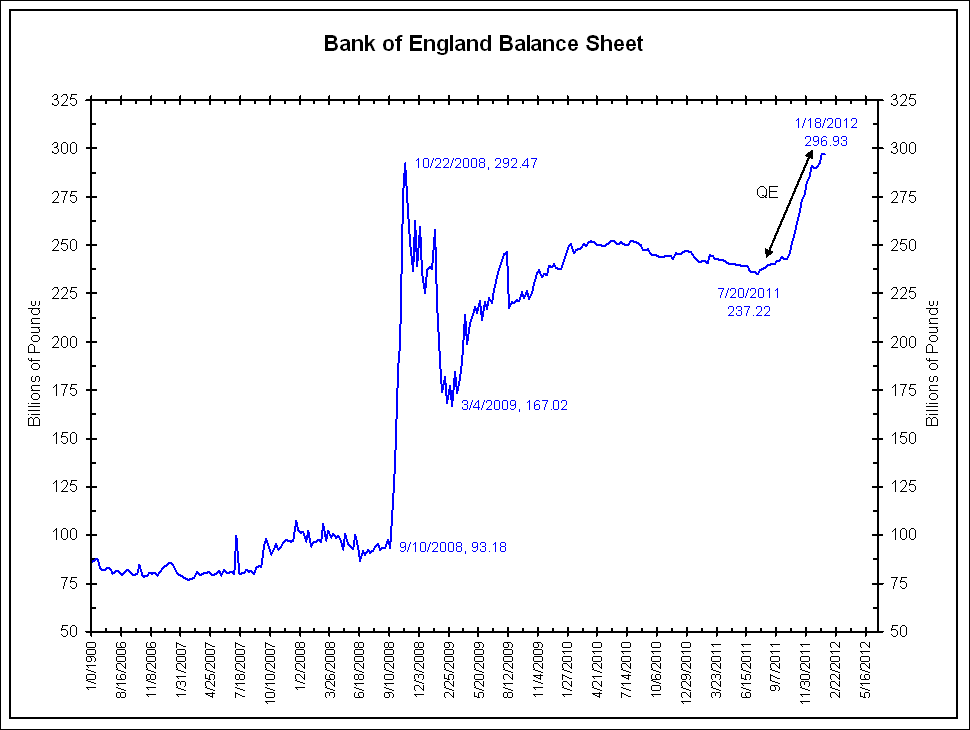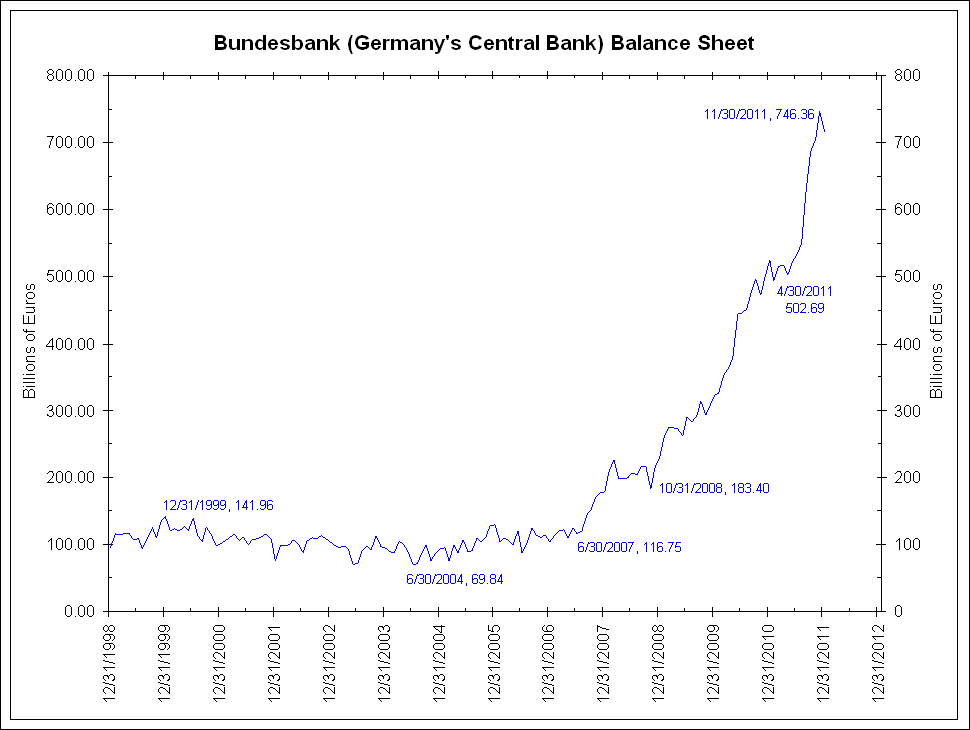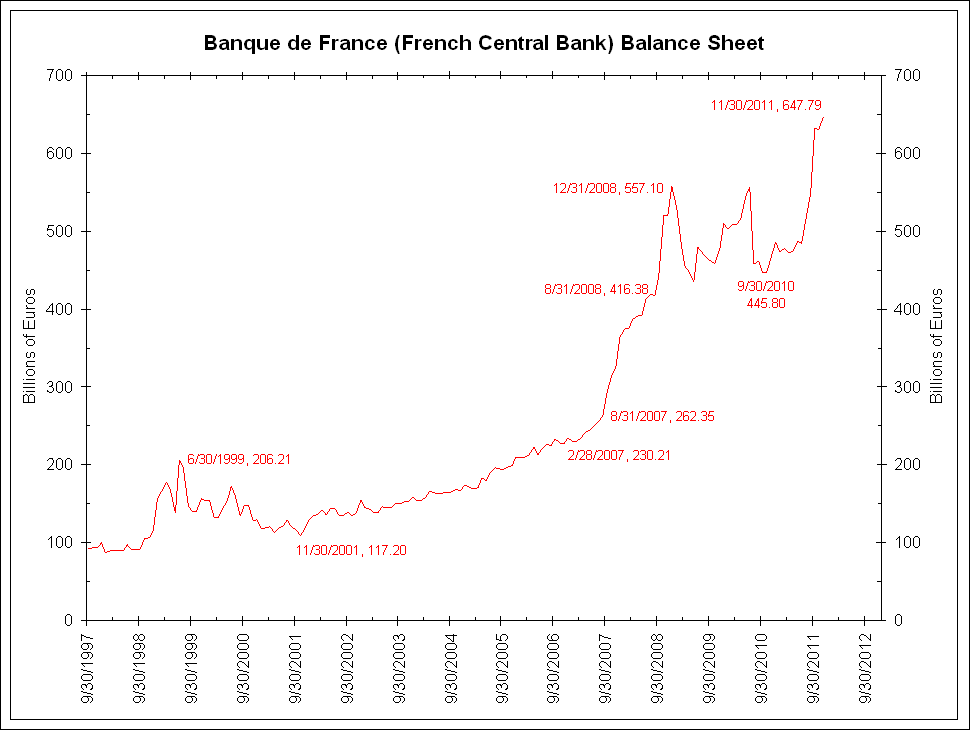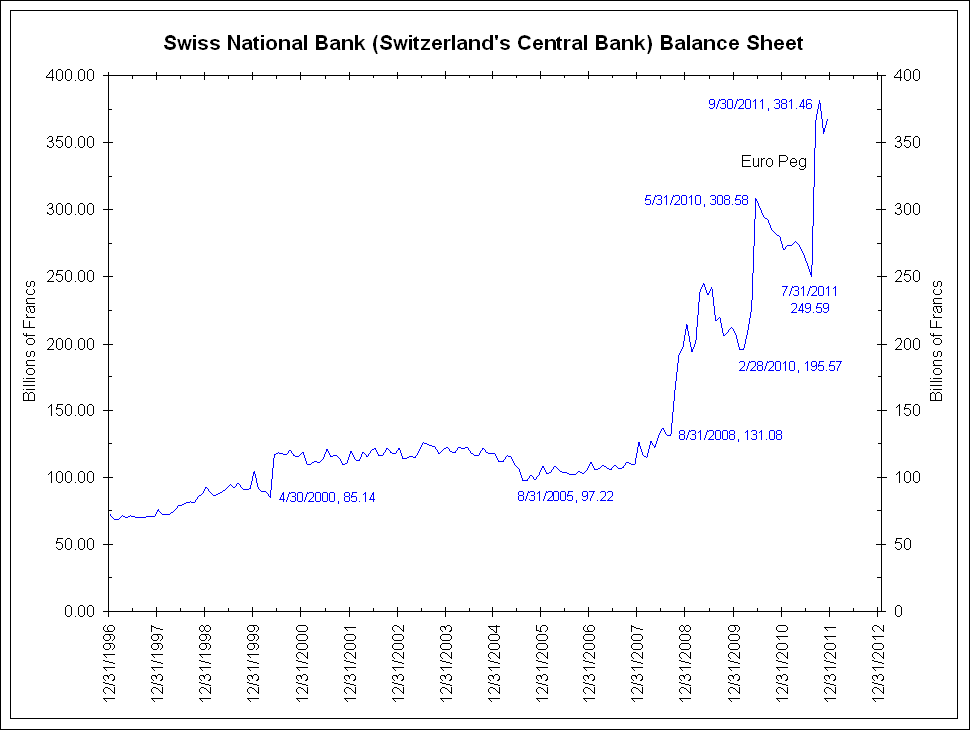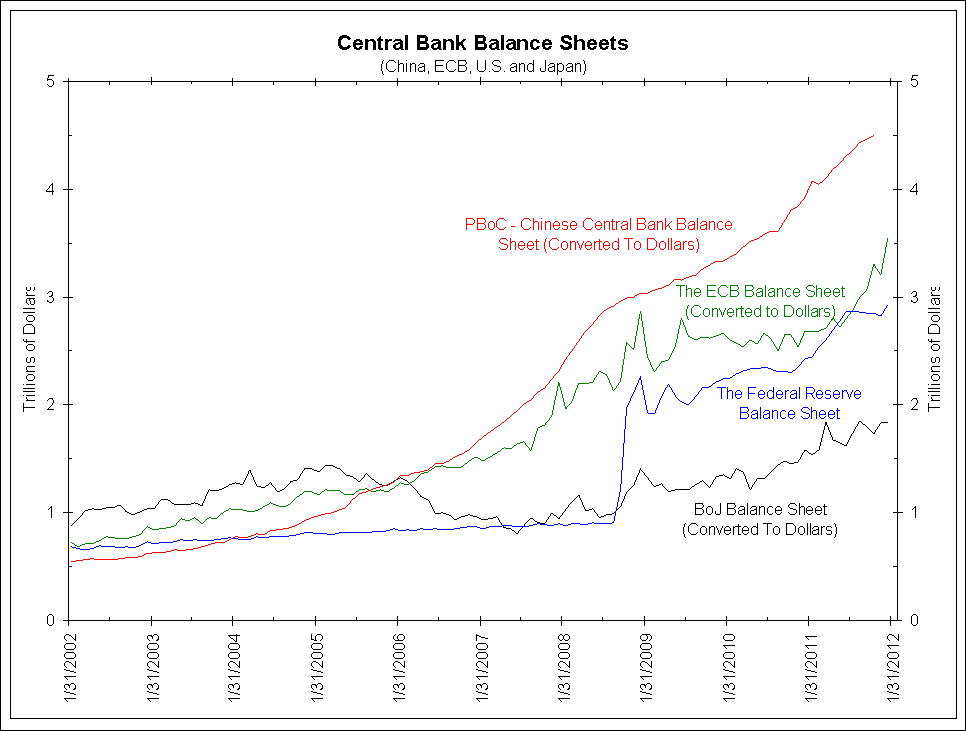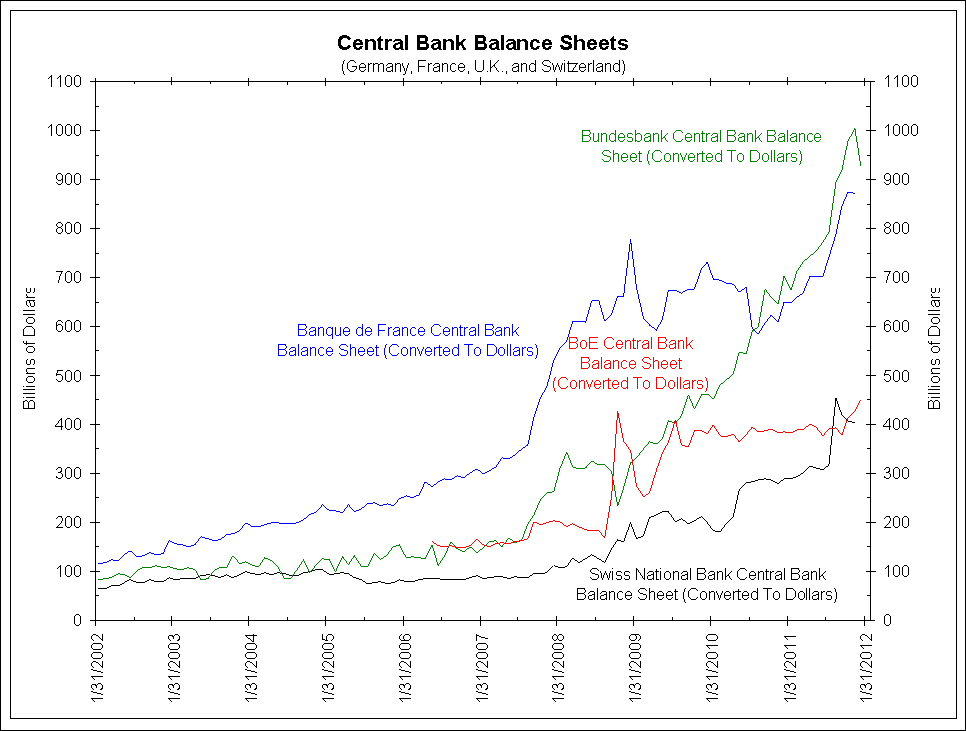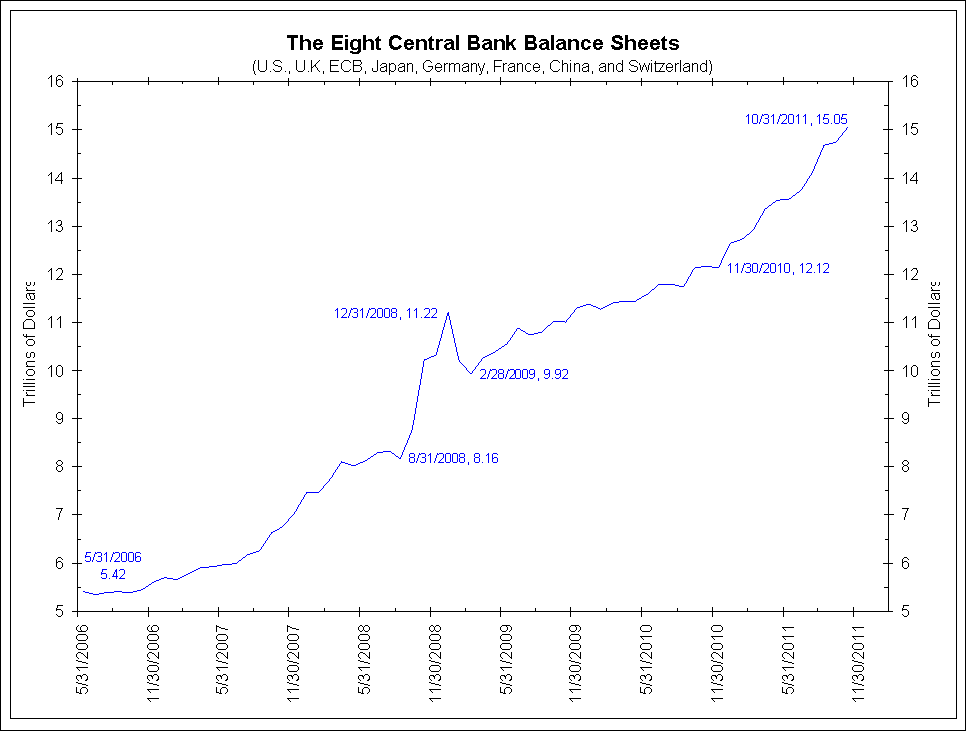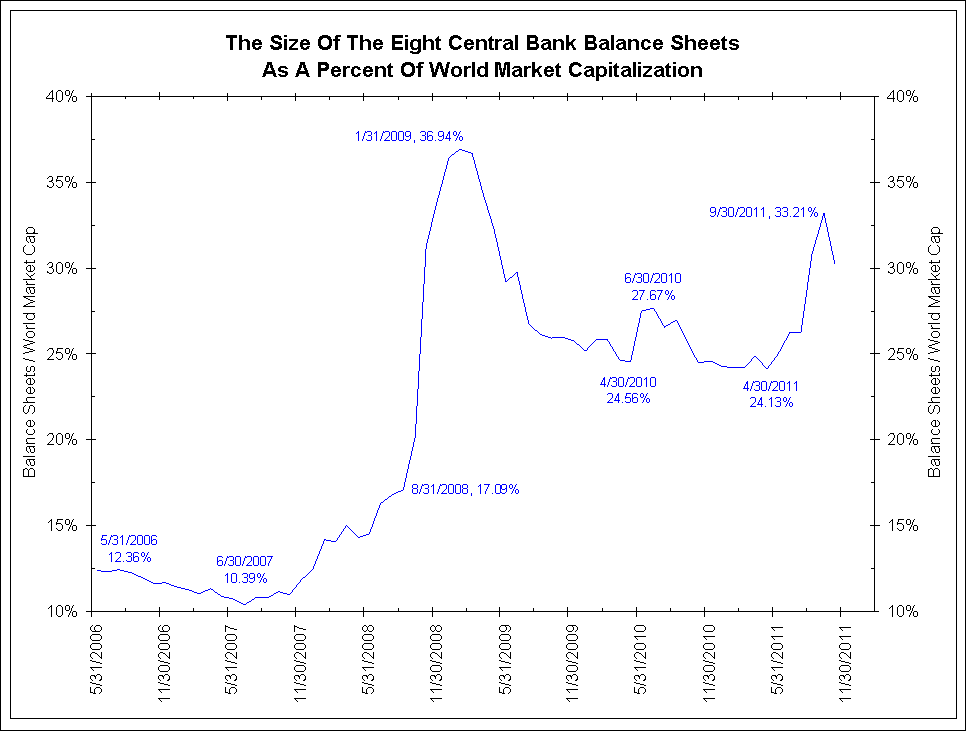The nightmare scenario of U.S. geopolitical strategists seems to be coming true: foreign economic independence from U.S. control. Instead of privatizing and neoliberalizing the world under U.S.-centered financial planning and ownership, the Russian and Chinese governments are investing in neighboring economies on terms that cement Eurasian economic integration on the basis of Russian oil and tax exports and Chinese financing. The Asian Infrastructure Investment Bank (AIIB) threatens to replace the IMF and World Bank programs that favor U.S. suppliers, banks and bondholders (with the United States holding unique veto power).
Russia’s 2013 loan to Ukraine, made at the request of Ukraine’s elected pro-Russian government, demonstrated the benefits of mutual trade and investment relations between the two countries. As Russian finance minister Anton Siluanov points out, Ukraine’s “international reserves were barely enough to cover three months’ imports, and no other creditor was prepared to lend on terms acceptable to Kiev. Yet Russia provided $3 billion of much-needed funding at a 5 per cent interest rate, when Ukraine’s bonds were yielding nearly 12 per cent.”[1]
What especially annoys U.S. financial strategists is that this loan by Russia’s sovereign debt fund was protected by IMF lending practice, which at that time ensured collectability by withholding new credit from countries in default of foreign official debts (or at least, not bargaining in good faith to pay). To cap matters, the bonds are registered under London’s creditor-oriented rules and courts.
On December 3 (one week before the IMF changed its rules so as to hurt Russia), Prime Minister Putin proposed that Russia “and other Eurasian Economic Union countries should kick-off consultations with members of the Shanghai Cooperation Organisation (SCO) and the Association of Southeast Asian Nations (ASEAN) on a possible economic partnership.”[2] Russia also is seeking to build pipelines to Europe through friendly instead of U.S.-backed countries.
Moving to denominate their trade and investment in their own currencies instead of dollars, China and Russia are creating a geopolitical system free from U.S. control. After U.S. officials threatened to derange Russia’s banking linkages by cutting it off from the SWIFT interbank clearing system, China accelerated its creation of the alternative China International Payments System (CIPS), with its own credit card system to protect Eurasian economies from the shrill threats made by U.S. unilateralists.
Russia and China are simply doing what the United States has long done: using trade and credit linkages to cement their geopolitical diplomacy. This tectonic geopolitical shift is a Copernican threat to New Cold War ideology: Instead of the world economy revolving around the United States (the Ptolemaic idea of America as “the indispensible nation”), it may revolve around Eurasia. As long as the global financial papacy remains grounded in Washington at the offices of the IMF and World Bank, such a shift in the center of gravity will be fought with all the power of the American Century (indeed, American Millennium) inquisition.
Imagine the following scenario five years from now. China will have spent half a decade building high-speed railroads, ports power systems and other construction for Asian and African countries, enabling them to grow and export more. These exports will be coming on line to repay the infrastructure loans. Also, suppose that Russia has been supplying the oil and gas energy needed for these projects.
To U.S. neocons this specter of AIIB government-to-government lending and investment creates fear of a world independent of U.S. control. Nations would mint their own money and hold each other’s debt in their international reserves instead of borrowing or holding dollars and subordinating their financial planning to the IMF and U.S. Treasury with their demands for monetary bloodletting and austerity for debtor countries. There would be less need for foreign government to finance budget shortfalls by selling off their key public infrastructure privatizing their economies. Instead of dismantling public spending, the AIIB and a broader Eurasian economic union would do what the United States itself practices, and seek self-sufficiency in basic needs such as food, technology, banking, credit creation and monetary policy.
With this prospect in mind, suppose an American diplomat meets with the leaders of debtors to China, Russia and the AIIB and makes the following proposal: “Now that you’ve got your increased production in place, why repay? We’ll make you rich if you stiff our New Cold War adversaries and turn to the West. We and our European allies will help you assign the infrastructure to yourselves and your supporters, and give these assets market value by selling shares in New York and London. Then, you can spend your surpluses in the West.”
How can China or Russia collect in such a situation? They can sue. But what court will recognize their claim – that is, what court that the West would pay attention to?
That is the kind of scenario U.S. State Department and Treasury officials have been discussing for more than a year. The looming conflict was made immediate by Ukraine’s $3 billion debt to Russia falling due by December 20, 2015. Ukraine’s U.S.-backed regime has announced its intention to default. U.S. lobbyists have just changed the IMF rules to remove a critical lever on which Russia and other governments have long relied to enforce payment of their loans.
The IMF’s role as enforcer of inter-government debts
When it comes down to enforcing nations to pay inter-government debts, the International Monetary Fund and Paris Club hold the main leverage. As coordinator of central bank “stabilization” loans (the neoliberal euphemism for imposing austerity and destabilizing debtor economies, Greece-style), the IMF is able to withhold not only its own credit but also that of governments and global banks participating when debtor countries need refinancing. Countries that do not agree to privatize their infrastructure and sell it to Western buyers are threatened with sanctions, backed by U.S.-sponsored “regime change” and “democracy promotion” Maidan-style.
This was the setting on December 8, when Chief IMF Spokesman Gerry Rice announced: “The IMF’s Executive Board met today and agreed to change the current policy on non-toleration of arrears to official creditors.” The creditor leverage that the IMF has used  is that if a nation is in financial arrears to any government, it cannot qualify for an IMF loan – and hence, for packages involving other governments. This has been the system by which the dollarized global financial system has worked for half a century. The beneficiaries have been creditors in US dollars.
is that if a nation is in financial arrears to any government, it cannot qualify for an IMF loan – and hence, for packages involving other governments. This has been the system by which the dollarized global financial system has worked for half a century. The beneficiaries have been creditors in US dollars.
In this U.S.-centered worldview, China and Russia loom as the great potential adversaries – defined as independent power centers from the United States as they create the Shanghai Cooperation Organization as an alternative to NATO, and the AIIB as an alternative to the IMF and World Bank tandem. The very name, Asian Infrastructure Investment Bank, implies that transportation systems and other infrastructure will be financed by governments, not relinquished into private hands to become rent-extracting opportunities financed by U.S.-centered bank credit to turn the rent into a flow of interest payments.
The focus on a mixed public/private economy sets the AIIB at odds with the Trans-Pacific Partnership (TPP) and its aim of relinquishing government planning power to the financial and corporate sector for their own short-term gains, and above all the aim of blocking government’s money-creating power and financial regulation. Chief Nomura economist Richard Koo, explained the logic of viewing the AIIB as a threat to the US-controlled IMF: “If the IMF’s rival is heavily under China’s influence, countries receiving its support will rebuild their economies under what is effectively Chinese guidance, increasing the likelihood they will fall directly or indirectly under that country’s influence.”[3]
Russian Finance Minister Anton Siluanov accused the IMF decision of being “hasty and biased.”[4] But it had been discussed all year long, calculating a range of scenarios for a long-term sea change in international law. The aim of this change is to isolate not only Russia, but even more China in its role as creditor to African countries and prospective AIIB borrowers. U.S. officials walked into the IMF headquarters in Washington with the legal equivalent of financial suicide vests, having decided that the time had come to derail Russia’s ability to collect on its sovereign loan to Ukraine, and of even larger import, China’s plan for a New Silk Road integrating a Eurasian economy independent of U.S. financial and trade control. Anders Aslund, senior fellow at the NATO-oriented Atlantic Council, points out:
The IMF staff started contemplating a rule change in the spring of 2013 because nontraditional creditors, such as China, had started providing developing countries with large loans. One issue was that these loans were issued on conditions out of line with IMF practice. China wasn’t a member of the Paris Club, where loan restructuring is usually discussed, so it was time to update the rules.
The IMF intended to adopt a new policy in the spring of 2016, but the dispute over Russia’s $3 billion loan to Ukraine has accelerated an otherwise slow decision-making process.[5]
The Wall Street Journal concurred that the underlying motivation for changing the IMF’s rules was the threat that Chinese lending would provide an alternative to IMF loans and its demands for austerity. “IMF-watchers said the fund was originally thinking of ensuring China wouldn’t be able to foil IMF lending to member countries seeking bailouts as Beijing ramped up loans to developing economies around the world.”[6] In short, U.S. strategists have designed a policy to block trade and financial agreements organized outside of U.S. control and that of the IMF and World Bank in which it holds unique veto power.
The plan is simple enough. Trade follows finance, and the creditor usually calls the tune. That is how the United States has used the Dollar Standard to steer Third World trade and investment since World War II along lines benefiting the U.S. economy.
The cement of trade credit and bank lending is the ability of creditors to collect on the international debts being negotiated. That is why the United States and other creditor nations have used the IMF as an intermediary to act as “honest broker” for loan consortia. (“Honest broker” means in practice being subject to U.S. veto power.) To enforce its financial leverage, the IMF has long followed the rule that it will not sponsor any loan agreement or refinancing for governments that are in default of debts owed to other governments. However, as the afore-mentioned Aslund explains, the IMF could easily change its practice of not lending into [countries in official] arrears … because it is not incorporated into the IMF Articles of Agreement, that is, the IMF statutes. The IMF Executive Board can decide to change this policy with a simple board majority. The IMF has lent to Afghanistan, Georgia, and Iraq in the midst of war, and Russia has no veto right, holding only 2.39 percent of the votes in the IMF. When the IMF has lent to Georgia and Ukraine, the other members of its Executive Board have overruled Russia.[7]
After the rules change, Aslund later noted, “the IMF can continue to give Ukraine loans regardless of what Ukraine does about its credit from Russia, which falls due on December 20. [8]
Inasmuch as Ukraine’s official debt to Russia’s sovereign debt fund was not to the U.S. Government, the IMF announced its rules change as a “clarification.” Its rule that no country can borrow if it is in default to (or not seriously negotiating with) a foreign government was created in the post-1945 world, and has governed the past seventy years in which the United States Government, Treasury officials and/or U.S. bank consortia have been party to nearly every international bailout or major loan agreement. What the IMF rule really meant was that it would not provide credit to countries in arrears specifically to the U.S. Government, not those of Russia or China.
Mikhail Delyagin, Director of the Institute of Globalization Problems, understood the IMF’s double standard clearly enough: “The Fund will give Kiev a new loan tranche on one condition that Ukraine should not pay Russia a dollar under its $3 billion debt. Legally, everything will be formalized correctly but they will oblige Ukraine to pay only to western creditors for political reasons.”[9] It remains up to the IMF board – and in the end, its managing director – whether or not to deem a country creditworthy. The U.S. representative naturally has always blocked any leaders not beholden to the United States.
The post-2010 loan packages to Greece are a notorious case in point. The IMF staff calculated that Greece could not possibly pay the balance that was set to bail out foreign banks and bondholders. Many Board members agreed (and subsequently have gone public with their whistle-blowing). Their protests didn’t matter. Dominique Strauss-Kahn backed the US-ECB position (after President Barack Obama and Treasury secretary Tim Geithner pointed out that U.S. banks had written credit default swaps betting that Greece could pay, and would lose money if there were a debt writedown). In 2015, Christine Lagarde also backed the U.S.-European Central Bank hard line, against staff protests.[10]
IMF executive board member Otaviano Canuto, representing Brazil, noted that the logic that “conditions on IMF lending to a country that fell behind on payments [was to] make sure it kept negotiating in good faith to reach agreement with creditors.”[11] Dropping this condition, he said, would open the door for other countries to insist on a similar waiver and avoid making serious and sincere efforts to reach payment agreement with creditor governments.
A more binding IMF rule is that it cannot lend to countries at war or use IMF credit to engage in warfare. Article I of its 1944-45 founding charter ban the fund from lending to a member state engaged in civil war or at war with another member state, or for military purposes in general. But when IMF head Lagarde made the last IMF loan to Ukraine, in spring 2015, she made a token gesture of stating that she hoped there would be peace. But President Porochenko immediately announced that he would step up the civil war with the Russian-speaking population in the eastern Donbass region.
The problem is that the Donbass is where most Ukrainian exports were made, mainly to Russia. That market is being lost by the junta’s belligerence toward Russia. This should have blocked Ukraine from receiving IMF aid. Withholding IMF credit could have been a lever to force peace and adherence to the Minsk agreements, but U.S. diplomatic pressure led that opportunity to be rejected.
The most important IMF condition being violated is that continued warfare with the East prevents a realistic prospect of Ukraine paying back new loans. Aslund himself points to the internal contradictions at work: Ukraine has achieved budget balance because the inflation and steep currency depreciation has drastically eroded its pension costs. The resulting lower value of pension benefits has led to growing opposition to Ukraine’s post-Maidan junta. “Leading representatives from President Petro Poroshenko’s Bloc are insisting on massive tax cuts, but no more expenditure cuts; that would cause a vast budget deficit that the IMF assesses at 9-10 percent of GDP, that could not possibly be financed.”[12] So how can the IMF’s austerity budget be followed without a political backlash?
The IMF thus is breaking four rules: Not lending to a country that has no visible means to pay back the loan breaks the “No More Argentinas” rule adopted after the IMF’s disastrous 2001 loan. Not lending to countries that refuse in good faith to negotiate with their official creditors goes against the IMF’s role as the major tool of the global creditors’ cartel. And the IMF is now lending to a borrower at war, indeed one that is destroying its export capacity and hence its balance-of-payments ability to pay back the loan. Finally, the IMF is lending to a country that has little likelihood of refuse carrying out the IMF’s notorious austerity “conditionalities” on its population – without putting down democratic opposition in a totalitarian manner. Instead of being treated as an outcast from the international financial system, Ukraine is being welcomed and financed.
The upshot – and new basic guideline for IMF lending – is to create a new Iron Curtain splitting the world into pro-U.S. economies going neoliberal, and all other economies, including those seeking to maintain public investment in infrastructure, progressive taxation and what used to be viewed as progressive capitalism. Russia and China may lend as much as they want to other governments, but there is no international vehicle to help secure their ability to be paid back under what until now has passed for international law. Having refused to roll back its own or ECB financial claims on Greece, the IMF is quite willing to see repudiation of official debts owed to Russia, China or other countries not on the list approved by the U.S. neocons who wield veto power in the IMF, World Bank and similar global economic institutions now drawn into the U.S. orbit. Changing its rules to clear the path for the IMF to make loans to Ukraine and other governments in default of debts owed to official lenders is rightly seen as an escalation of America’s New Cold War against Russia and also its anti-China strategy.
Timing is everything in such ploys. Georgetown University Law professor and Treasury consultant Anna Gelpern warned that before the “IMF staff and executive board [had] enough time to change the policy on arrears to official creditors,” Russia might use “its notorious debt/GDP clause to accelerate the bonds at any time before December, or simply gum up the process of reforming the IMF’s arrears policy.”[13] According to this clause, if Ukraine’s foreign debt rose above 60 percent of GDP, Russia’s government would have the right to demand immediate payment. But no doubt anticipating the bitter fight to come over its attempts to collect on its loan, President Putin patiently refrained from exercising this option. He is playing the long game, bending over backward to accommodate Ukraine rather than behaving “odiously.”
A more pressing reason deterring the United States from pressing earlier to change IMF rules was that a waiver for Ukraine would have opened the legal floodgates for Greece to ask for a similar waiver on having to pay the “troika” – the European Central Bank (ECB), EU commission and the IMF itself – for the post-2010 loans that have pushed it into a worse depression than the 1930s. “Imagine the Greek government had insisted that EU institutions accept the same haircut as the country’s private creditors,” Russian finance minister Anton Siluanov asked. “The reaction in European capitals would have been frosty. Yet this is the position now taken by Kiev with respect to Ukraine’s $3 billion eurobond held by Russia.”[14]
Only after Greece capitulated to eurozone austerity was the path clear for U.S. officials to change the IMF rules in their fight to isolate Russia. But their tactical victory has come at the cost of changing the IMF’s rules and those of the global financial system irreversibly. Other countries henceforth may reject conditionalities, as Ukraine has done, and ask for write-downs on foreign official debts.
That was the great fear of neoliberal U.S. and Eurozone strategists last summer, after all. The reason for smashing Greece’s economy was to deter Podemos in Spain and similar movements in Italy and Portugal from pursuing national prosperity instead of eurozone austerity. Opening the door to such resistance by Ukraine is the blowback of America’s tactic to make a short-term financial hit on Russia while its balance of payments is down as a result of collapsing oil and gas prices.
The consequences go far beyond just the IMF. The fabric of international law itself is being torn apart. Every action has a reaction in the Newtonian world of geopolitics. It may not be a bad thing, to be sure, for the post-1945 global order to be broken apart by U.S. tactics against Russia, if that is the catalyst driving other countries to defend their own economies in the legal and political spheres. It has been U.S. neoliberals themselves who have catalyzed the emerging independent Eurasian bloc.
Countering Russia’s ability to collect in Britain’s law courts
Over the past year the U.S. Treasury and State Departments have discussed ploys to block Russia from collecting under British law, where its loans to Ukraine are registered. Reviewing the repertory of legal excuses Ukraine might use to avoid paying Russia, Prof. Gelpern noted that it might declare the debt “odious,” made under duress or corruptly. In a paper for the Peterson Institute of International Economics (the banking lobby in Washington) she suggested that Britain should deny Russia the use of its courts as an additional sanction reinforcing the financial, energy, and trade sanctions to those passed against Russia after Crimea voted to join it as protection against the ethnic cleansing from the Right Sector, Azov Battalion and other paramilitary groups descending on the region.[15]
A kindred ploy might be for Ukraine to countersue Russia for reparations for “invading” it, for saving Crimea and the Donbass region from the Right Sector’s attempt to take over the country. Such a ploy would seem to have little chance of success in international courts (without showing them to be simply arms of NATO New Cold War politics), but it might delay Russia’ ability to collect by tying the loan up in a long nuisance lawsuit.
To claim that Ukraine’s debt to Russia was “odious” or otherwise illegitimate, “President Petro Poroshenko said the money was intended to ensure Yanukovych’s loyalty to Moscow, and called the payment a ‘bribe,’ according to an interview with Bloomberg in June this year.”[16] The legal and moral problem with such arguments is that they would apply equally to IMF and US loans. Claiming that Russia’s loan is “odious” is that this would open the floodgates for other countries to repudiate debts taken on by dictatorships supported by IMF and U.S. lenders, headed by the many dictatorships supported by U.S. diplomacy.
The blowback from the U.S. multi-front attempt to nullify Ukraine’s debt may be used to annul or at least write down the destructive IMF loans made on the condition that borrowers accept privatizations favoring U.S., German and other NATO-country investors, undertake austerity programs, and buy weapons systems such as the German submarines that Greece borrowed to pay for. As Foreign Minister Sergei Lavrov noted: “This reform, which they are now trying to implement, designed to suit Ukraine only, could plant a time bomb under all other IMF programs.” It certainly showed the extent to which the IMF is subordinate to U.S. aggressive New Cold Warriors: “Essentially, this reform boils down to the following: since Ukraine is politically important – and it is only important because it is opposed to Russia – the IMF is ready to do for Ukraine everything it has not done for anyone else, and the situation that should 100 percent mean a default will be seen as a situation enabling the IMF to finance Ukraine.”[17]
Andrei Klimov, deputy chairman of the Committee for International Affairs at the Federation Council (the upper house of Russia’s parliament) accused the United States of playing “the role of the main violin in the IMF while the role of the second violin is played by the European Union. These are two basic sponsors of the Maidan – the symbol of a coup d’état in Ukraine in 2014.”[18]
Putin’s counter-strategy and the blowback on U.S.-European and global relations
As noted above, having anticipated that Ukraine would seek reasons to not pay the Russian loan, President Putin carefully refrained from exercising Russia’s right to demand immediate payment when Ukraine’s foreign debt rose above 60 percent of GDP. In November he offered to defer payment if the United States, Europe and international banks underwrote the obligation. Indeed, he even “proposed better conditions for this restructuring than those the International Monetary Fund requested of us.” He offered “to accept a deeper restructuring with no payment this year – a payment of $1 billion next year, $1 billion in 2017, and $1 billion in 2018.” If the IMF, the United States and European Union “are sure that Ukraine’s solvency will grow,” then they should “see no risk in providing guarantees for this credit.” Accordingly, he concluded “We have asked for such guarantees either from the United States government, the European Union, or one of the big international financial institutions.” [19]
The implication, Putin pointed out, was that “If they cannot provide guarantees, this means that they do not believe in the Ukrainian economy’s future.” One professor pointed out that this proposal was in line with the fact that, “Ukraine has already received a sovereign loan guarantee from the United States for a previous bond issue.” Why couldn’t the United States, Eurozone or leading commercial banks provide a similar guarantee of Ukraine’s debt to Russia – or better yet, simply lend it the money to turn it into a loan to the IMF or US lenders?[20]
But the IMF, European Union and the United States refused to back up their happy (but nonsensical) forecasts of Ukrainian solvency with actual guarantees. Foreign Minister Lavrov made clear just what that rejection meant: “By having refused to guarantee Ukraine’s debt as part of Russia’s proposal to restructure it, the United States effectively admitted the absence of prospects of restoring its solvency. … By officially rejecting the proposed scheme, the United States thereby subscribed to not seeing any prospects of Ukraine restoring its solvency.”[21]
In an even more exasperated tone, Prime Minister Dmitri Medvedev explained to Russia’s television audience: “I have a feeling that they won’t give us the money back because they are crooks. They refuse to return our money and our Western partners not only refuse to help, but they also make it difficult for us.”[22] Adding that “the international financial system is unjustly structured,” he promised to “go to court. We’ll push for default on the loan and we’ll push for default on all Ukrainian debts.”
The basis for Russia’s legal claim, he explained was that the loan was a request from the Ukrainian Government to the Russian Government. If two governments reach an agreement this is obviously a sovereign loan…. Surprisingly, however, international financial organisations started saying that this is not exactly a sovereign loan. This is utter bull. Evidently, it’s just an absolutely brazen, cynical lie. … This seriously erodes trust in IMF decisions. I believe that now there will be a lot of pleas from different borrower states to the IMF to grant them the same terms as Ukraine. How will the IMF possibly refuse them?
And there the matter stands. As President Putin remarked regarding America’s support of Al Qaeda, Al Nusra and other ISIS allies in Syria, “Do you have any idea of what you have done?”
The blowback
Few have calculated the degree to which America’s New Cold War with Russia is creating a reaction that is tearing up the world’s linkages put in place since World War II. Beyond pulling the IMF and World Bank tightly into U.S. unilateralist geopolitics, how long will Western Europe be willing to forego its trade and investment interest with Russia? Germany, Italy and France already are feeling the strains. If and when a break comes, it will not be marginal but a seismic geopolitical shift.
The oil and pipeline war designed to bypass Russian energy exports has engulfed the Near East in anarchy for over a decade. It is flooding Europe with refugees, and also spreading terrorism to America. In the Republican presidential debate on December 15, 2015, the leading issue was safety from Islamic jihadists. Yet no candidate thought to explain the source of this terrorism in America’s alliance with Wahabist Saudi Arabia and Qatar, and hence with Al Qaeda and ISIS/Daish as a means of destabilizing secular regimes seeking independence from U.S. control.
As its allies in this New Cold War, the United States has chosen fundamentalist jihadist religion against secular regimes in Libya, Iraq, Syria, and earlier in Afghanistan and Turkey. Going back to the original sin of CIA hubris – overthrowing the secular Iranian Prime Minister leader Mohammad Mosaddegh in 1953 – American foreign policy has been based on the assumption that secular regimes tend to be nationalist and resist privatization and neoliberal austerity.
Based on this fatal long-term assumption, U.S. Cold Warriors have aligned themselves not only against secular regimes, but against democratic regimes where these seek to promote their own prosperity and economic independence, and to resist neoliberalism in favor of maintaining their traditional mixed public/private economy.
This is the back story of the U.S. fight to control the rest of the world. Tearing apart the IMF’s rules is only the most recent chapter. The broad drive against Russia, China and their prospective Eurasian allies has deteriorated into tactics without a realistic understanding of how they are bringing about precisely the kind of world they are seeking to prevent – a multilateral world.
Arena by arena, the core values of what used to be American and European social democratic ideology are being uprooted. The Enlightenment’s ideals of secular democracy and the rule of international law applied equally to all nations, classical free market theory (of markets free from unearned income and rent extraction by special vested interests), and public investment in infrastructure to hold down the cost of living and doing business are to be sacrificed to a militant U.S. unilateralism as “the indispensible nation.” Standing above the rule of law and national interests, American neocons proclaim that their nation’s destiny is to wage war to prevent foreign secular democracy from acting in ways other than submission to U.S. diplomacy. In practice, this means favoring special U.S. financial and corporate interests that control American foreign policy.
This is not how the Enlightenment was supposed to turn out. Classical industrial capitalism a century ago was expected to evolve into an economy of abundance. Instead, we have Pentagon capitalism, finance capitalism deteriorating into a polarized rentier economy, and old-fashioned imperialism.
The Dollar Bloc’s financial Iron Curtain
By treating Ukraine’s nullification of its official debt to Russia’s Sovereign Wealth Fund as the new norm, the IMF has blessed its default on its bond payment to Russia. President Putin and foreign minister Lavrov have said that they will sue in British courts. But does any court exist in the West not under the thumb of U.S. veto?
What are China and Russia to do, faced with the IMF serving as a kangaroo court whose judgments are subject to U.S. veto power? To protect their autonomy and self-determination, they have created alternatives to the IMF and World Bank, NATO and behind it, the dollar standard.
America’s recent New Cold War maneuvering has shown that the two Bretton Woods institutions are unreformable. It is easier to create new institutions such as the A.I.I.B. than to retrofit old and ill-designed ones burdened with the legacy of their vested founding interests. It is easier to expand the Shanghai Cooperation Organization than to surrender to threats from NATO.
U.S. geostrategists seem to have imagined that if they exclude Russia, China and other SCO and Eurasian countries from the U.S.-based financial and trade system, these countries will find themselves in the same economic box as Cuba, Iran and other countries have been isolated by sanctions. The aim is to make countries choose between impoverishment from such exclusion, or acquiescing in U.S. neoliberal drives to financialize their economies and impose austerity on their government sector and labor.
What is lacking from such calculations is the idea of critical mass. The United States may use the IMF and World Bank as levers to exclude countries not in the U.S. orbit from participating in the global trade and financial system, and it may arm-twist Europe to impose trade and financial sanctions on Russia. But this action produces an equal and opposite reaction. That is the eternal Newtonian law of geopolitics. The indicated countermeasure is simply for other countries to create their own international financial organization as an alternative to the IMF, their own “aid” lending institution to juxtapose to the U.S.-centered World Bank.
All this requires an international court to handle disputes that is free from U.S. arm-twisting to turn international law into a kangaroo court following the dictates of Washington. The Eurasian Economic Union now has its own court to adjudicate disputes. It may provide an alternative Judge Griesa‘s New York federal court ruling in favor of vulture funds derailing Argentina’s debt negotiations and excluding it from foreign financial markets. If the London Court of International Arbitration (under whose rules Russia’s bonds issued to Ukraine are registered) permits frivolous legal claims (called barratry in English) such as President Poroshenko has threatened in Ukrainian Parliament, it too will become a victim of geopolitical obsolescence.
The more nakedly self-serving and geopolitical U.S. policy is – in backing radical Islamic fundamentalist outgrowths of Al Qaeda throughout the Near East, right-wing nationalist governments in Ukraine and the Baltics – the greater the catalytic pressure is growing for the Shanghai Cooperation Organization, AIIB and related Eurasian institutions to break free of the post-1945 Bretton Woods system run by the U.S. State, Defense and Treasury Departments and NATO superstructure.
The question now is whether Russia and China can hold onto the BRICS and India. So as Paul Craig Roberts recently summarized my ideas along these lines, we are back with George Orwell’s 1984 global fracture between Oceanea (the United States, Britain and its northern European NATO allies) vs. Eurasia.
Notes.
[1] Anton Siluanov, “Russia wants fair rules on sovereign debt,” Financial Times, December 10, 2015.
[2] “Putin Seeks Alliance to Rival TPP,” RT.com (December 04 2015),
https://www.rt.com/business/324747-putin-tpp-bloc-russia/. The Eurasian Economic Union was created in 2014 by Russia, Belarus and Kazakhstan, soon joined by Kyrgyzstan and Armenia. The SCO was created in 2001 in Shanghai by the leaders of China, Russia, Kazakhstan, Kyrgyzstan, Tajikistan, and Uzbekistan. India and Pakistan are scheduled to join, along with Iran, Afghanistan and Belarus as observers, and other east and Central Asian countries as “dialogue partners.” ASEAN was formed in 1967, originally by Indonesia, Malaysia the Philippines, Singapore and Thailand. It subsequently has been expanded. China and the AIIB are reaching out to replace World Bank. The U.S. refused to join the AIIB, opposing it from the outset.
[3] Richard Koo, “EU refuses to acknowledge mistakes made in Greek bailout,” Nomura, July 14, 2015. Richard Koo, r-koo@nri.co, jp
[4] Ian Talley, “IMF Tweaks Lending Rules in Boost for Ukraine,” Wall Street Journal, December 9, 2015.
[5] Anders Aslund, “The IMF Outfoxes Putin: Policy Change Means Ukraine Can Receive More Loans,” Atlantic Council, December 8, 2015. On Johnson’s Russia List, December 9, 2015, #13. Aslund was a major defender of neoliberal shock treatment and austerity in Russia, and has held up Latvian austerity as a success story rather than a disaster.
[6] Ian Talley, op. cit.
[7] Anders Åslund, “Ukraine Must Not Pay Russia Back,” Atlantic Council, November 2, 2015 (from Johnson’s Russia List, November 3, 2015, #50).
[8] Anders Aslund, “The IMF Outfoxes Putin,” op. cit.
[9] Quoted in Tamara Zamyantina, “IMF’s dilemma: to help or not to help Ukraine, if Kiev defaults,” TASS, translated on Johnson’s Russia List, December 9, 2015, #9.
[10] I provide a narrative of the Greek disaster in Killing the Host (2015).
[11] Reuters, “IMF rule change keeps Ukraine support; Russia complains,” Dec 8, 2015. http://www.reuters.com/article/us-ukraine-crisis-imf-idUSKBN0TR28Q20151208#r8em59ZOcIPIkqaD.97
[12] Anders Aslund, “The IMF Outfoxes Putin,” op. cit.
[13] Anna Gelpern, “Russia’s Bond: It’s Official! (… and Private … and Anything Else It Wants to Be …),” Credit Slips, April 17, 2015. http://www.creditslips.org/creditslips/2015/04/russias-ukraine-bond-its-official-and-private-and-anything-else-it-wants-to-be-.html
[14] Anton Siluanov, “Russia wants fair rules on sovereign debt,” Financial Times, December 10, 2015. He added: “Russia’s financing was not made for commercial gain. Just as America and Britain regularly do, it provided assistance to a country whose policies it supported. The US is now supporting the current Ukrainian government through its USAID guarantee programme.”
[15] John Helmer: IMF Makes Ukraine War-Fighting Loan, Allows US to Fund Military Operations Against Russia, May Repay Gazprom Bill,” Naked Capitalism, March 16, 2015 (from his site Dances with Bears).
[16] “Ukraine Rebuffs Putin’s Offer to Restructure Russian Debt,” Moscow Times, November 20, 2015, from Johnson’s Russia List, November 20, 2015, #32.
[17] “Lavrov: U.S. admits lack of prospects of restoring Ukrainian solvency,” Interfax, November 7, 2015, translated on Johnson’s Russia List, December 7, 2015, #38.
[18] Quoted by Tamara Zamyantina, “IMF’s dilemma,” op. cit. [fn 8].
[19] Vladimir Putin, “Responses to journalists’ questions following the G20 summit,” Kremlin.ru, November 16, 2015. From Johnson’s Russia List, November 17, 2015, #7.
[20] Anton Tabakh, “A Debt Deal for Kiev?” Carnegie Moscow Center, November 20, 2015, on Johnson’s Russia List, November 20, 2015, #34. Tabakh is Director for regional ratings at “Rus-Rating” and associate professor at the National Research University Higher School of Economics, Moscow.
[21] “Lavrov: U.S. admits lack of prospects of restoring Ukrainian solvency,” November 7, 2015, translated on Johnson’s Russia List, December 7, 2015, #38.
[22] “In Conversation with Dmitry Medvedev: Interview with five television channels,” Government.ru, December 9, 2015, from Johnson’s Russia List, December 10, 2015, #2

